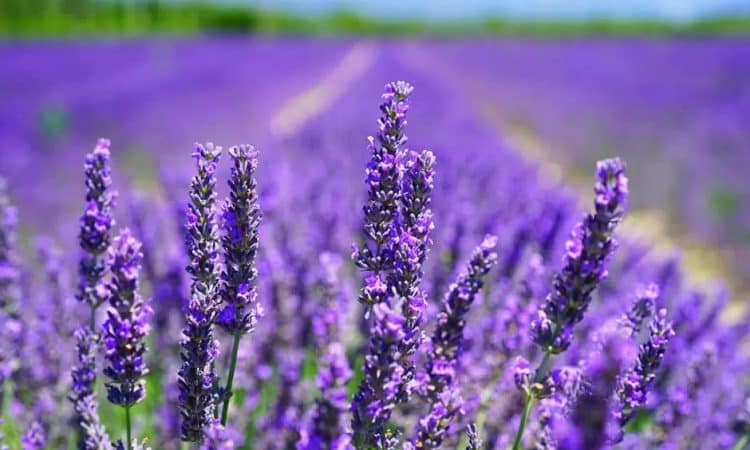
Lavender is a plant that just keeps on growing in popularity! It’s easy to see why. Not only does it look gorgeous, but it also has a lovely, enchanting aroma. It’s native to the Mediterranean, and people have been enjoying its beauty and medicinal benefits for centuries. But how can you grow your own lavender without having to buy new pots? The answer is simple: cuttings and water!
Properties of lavender
Known for its versatility, lavender can be used in a variety of fields ranging from aromatherapy to cooking. Legend even suggests that Cleopatra used lavender oil to seduce Mark Antony. This fact reflects the enduring fascination with the seductive and calming properties of this plant. The essential oils present in its flowers are highly effective in relieving stress, promoting relaxation and improving sleep quality. In addition, it is often used in cosmetic products and as a natural mosquito repellent.
What is the technique for propagating lavender at home?
The reproduction of lavender by cuttings is a simple and economical method. The process begins with the selection of a healthy mother plant. As soon as it enters for the first time through the doors of your house, you fall in love with it. The idea is to take cuttings from this plant to create new ones.
The fundamental steps to follow are:
- Selection of cuttings: It is essential to have a healthy mother plant from which cuttings of about 10-15 centimeters in length can be cut. The tools must be clean and well sharpened to avoid damaging the plant. In addition, scissors should be used to cut cut cuttings from their stem that have at least a couple of leaves on top.
- Preparing the container: After having the cuttings, the next step is to place the stems in a container with clean water. It is important to remove the lower leaves to allow the roots to grow. On the other hand, the roots should have enough space to grow freely.
- Proper location: The container should be placed in a bright location but out of direct sunlight and away from drafts. This ensures that the cuttings receive the necessary light without the risk of drying out.
- Water change: It is of utmost importance to change the water in the container every few days in order to keep it clean and oxygenated. It is also recommended to regularly observe the cuttings for signs of deterioration or mold formation.
- Root growth: In a few weeks, roots will begin to show on the cuttings, at which time they will be ready to be transplanted into pots with adequate soil for continued growth.
Additional care to consider
- Adequate watering: Lavender does not require excessive water and is susceptible to waterlogging. It is recommended to water the plant only when the soil is dry to the touch. Avoiding overwatering is crucial to prevent fungal diseases and root rot.
- Regular pruning: Pruning is essential to keep lavender healthy and growing well. Light pruning should be done in spring and more severe pruning in fall, removing faded flowers and old stems to stimulate the production of new shoots.
- Fertilization: Although lavender is not very demanding in terms of fertilization, a light input of organic fertilizer during the spring can improve its vitality and flowering. Using specific fertilizers for aromatic plants will help maintain vigorous growth without saturating with nutrients.
- Protection against pests: Common pests include aphids and spider mites. It is advisable to check plants regularly and intervene with natural treatments (such as insecticidal soap) or chemicals if necessary. In addition, lavender can be planted with other insect-repellent plants for biological control.
- Transplanting and soil renewal: Every two to three years, it is beneficial to renew the lavender soil or transplant it to rejuvenate the plant and provide fresh nutrients. Make sure the pot has a good drainage system to avoid waterlogging problems.
- Specific winter care: For varieties grown outdoors, it is essential to protect them during the winter, especially in cold climates. Mulching the base or moving potted plants to a protected location can help them survive the cold temperatures.

